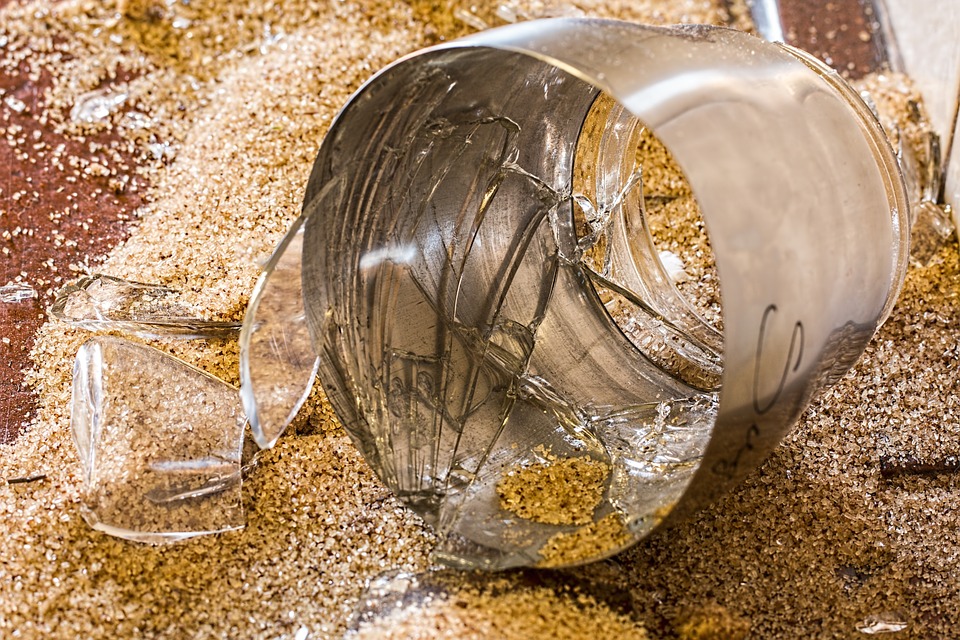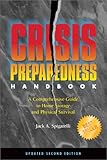The 7 Major Mistakes in Food Storage
 Food storage is often approached with dread, even by the most ardent practitioners of preparedness. The temptation is to do it as simply and as easily as possible. Many might be tempted to simply buy several bins of wheat, cans of honey, cases of powdered milk, stack them up and call it a day.
Food storage is often approached with dread, even by the most ardent practitioners of preparedness. The temptation is to do it as simply and as easily as possible. Many might be tempted to simply buy several bins of wheat, cans of honey, cases of powdered milk, stack them up and call it a day.
So whets wrong with this storage plan? What people end up with is a static mound of ingredients with very little strategy for continuity, practicality or usage. There are seven serious problems that may occur trying to live on these basics. Below we’ll outline the seven most common mistakes and basic strategies to overcome them.
#1 Variety
Most people don’t have enough variety in their storage. The 4 basic items we mentioned earlier: wheat, milk, honey, and salt are a foundation and a pretty limiting one at that. Statistics show most of us wont survive on such a diet for several reasons.
a) Many people have varying degrees of tolerance to wheat (some even harbor an unknown allergy) and may not be aware of it until they are eating it meal after meal.
b) Wheat is too harsh for young children. They can tolerate it in small amounts but not as their main staple.
c) We get tired of eating the same foods over and over and many times prefer to not eat, then to sample that particular food again.
This is called appetite fatigue. Young children and older people are particularly susceptible to it. Store less wheat than is generally suggested and put the difference into a variety of other grains, particular ones your family likes to eat. Also store a variety of beans. This will add variety of color texture and flavor. Variety is the key to a successful storage program. It is essential that you store flavorings such as tomato, bouillon, cheese, and onion.
Also, include a good supply of the spices you like to cook with. These flavorings and spices allow you to do many creative things with your grains and beans. Without them you are severely limited. One of the best suggestions I can give you is buy a good food storage cookbook, go through it, and see what your family would really eat. Notice the ingredients as you do it. This will help you more than anything else to know what items to store.
#2 Extended Staples
Few people get beyond storing the four basic items but its extremely important that you do so. Never put all your eggs in one basket. Store dehydrated and/or freeze dried foods as well as home canned and store bought canned goods. Make sure you add cooking oil, shortening, baking powder, soda, yeast and powdered eggs. You cant cook even the most basic recipes without these items.
#3 Vitamins
While fortified, quick usage foods and fresh produce contain most of the vitamins essential for human health, in a long-term storage situation, hedging against the shortcomings of food practicalities can be vital. Vitamins supplements are an important way to round things out, especially if you have children, since they do not store body reserves of many nutrients as adults do. A good quality multi-vitamin and vitamin C are the most vital. Others might be added as your budget permits; calcium and iron for late middle-age and older, prenatals for expectant mothers and so on.
#4 Quick and Easy and Psychological Foods
I was recently re-watching PBS’s “The Frontier House” and one factor that was impressed upon viewers was the need for constant food preparation and processing. Quick and easy foods help you through times when you are psychologically or physically unable to prepare your basic storage items. No cook foods such as freeze-dried are wonderful since they require little preparation, MRE’s (Meal Ready to Eat), such as many preparedness outlets carry, canned goods, etc. are also very good. Psychological Foods are the goodies – Jell-O, pudding, candy, etc. – you should add to your storage.
These may sound frivolous, but through the years I’ve talked with many people who have lived entirely on their storage for extended periods of time. Nearly all of them say these were the most helpful items in their storage to normalize their situations and make it more bearable. These are especially important if you have children or you will need to make extended forays away from your storage supply.
#5 Balance
Time and time again I’ve seen families buy all of their wheat, then buy all of another item and so on. Don’t do that. Its important to keep well-balanced as you build your storage. Buy several items, rather than a large quantity of one item. If something happens and you have to live on your present storage you’ll fare much better having a one month supply of a variety of items than a years supply of two to three items.
#6. Containers
Always store your bulk foods in food storage containers. Sacks are fine for frugal packaging and transportation in the initial stages, but tons and tons of food are thrown away because they were left in sacks, where they became highly susceptible to moisture, insects, and rodents. If you are using plastic buckets make sure they are lined with a food grade plastic liner available from companies that carry packaging supplies. Never use trash can liners as these are treated with pesticides. Don’t stack them too high. In an earthquake they may topple, the lids pop open, or they may crack. A better container is the #10 tin can which most preparedness companies use when they package their foods.
#7. Use Your Storage
In all the years I’ve worked with preparedness one of the biggest problems I’ve seen is people storing food and not knowing what to do with it. Its vital that you and your family become familiar with the things you are storing. You need to know how to prepare these foods. This is not something you want to have to learn under stress. Your family needs to be used to eating these foods. Also, this encourages rotation, which keeps your supplies fresh.
Further Research:
   |